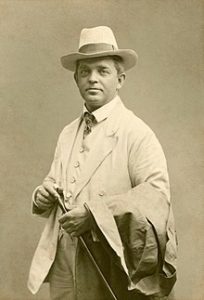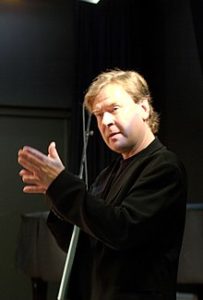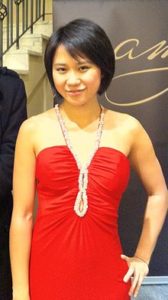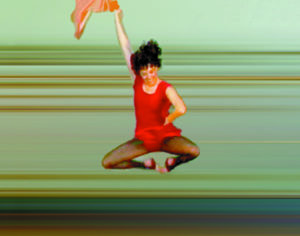This article was published in January, 2018, by the Institute for Historical Studies. I want to share it now in honor of James Wright, former President of Dartmouth and History Professor Emeritus. He passed away only a few weeks ago. In addition to a fine author and historian, he was a great guy. His service to the USA began when he was 17 and joined the Marines and, in his leadership and generous spirit, his service continues.
STILL ENDURING VIET NAM
In 1966, I got on a bus to Oakland at San Francisco Airport. I had never been to SF and don’t think I had previously heard of Oakland. I had taken a Youth Fare ticket to San Francisco to surprise my parents in Oakland. I relied “on the kindness of strangers” to find out how to get there. Three servicemen coming back from Viet Nam were the only others on the bus. They spoke in short phrases that seemed to choke them. I remember one telling about a buddy who had gotten killed and mostly eaten by a tiger. They exchanged abrupt reports about the jungle, bad food, heat, bugs, fear. In 1967, my friend L.E.L was drafted out of his Marshall Scholarship at Oxford. He went to Ft. Campbell, KY. His basic training buddies wanted to write home but needed him to show them where to put a stamp on an envelope. He went to Saigon, reviewed intelligence, and wrote reports for colonels. The colonels did not like the reports and changed them before sending them to the generals. “Sponky,” red-headed, football star two years ahead of me in high school, was the first one I knew who was killed. That’s how I remember him.
In 2017, when I heard that my college friend Susan’s husband had published a book about Viet Nam, I was perplexed. I had, thought I had, a read-no-Viet Nam-books policy, but I wanted to read Enduring Viet Nam, by James Wright, because he is married to my friend. He is also President Emeritus of Dartmouth College, Eleazar Wheelock Professor Emeritus of History. This fine book led me to remember, relive, and learn more about those war years. The names were as real and close to me as people I had lived with growing up. Try this one: Mel Laird. Is he part of your life, too?
Reading the book, I recognized that despite the boycott I thought I had lived by, I had read many Viet Nam books. I read Bernard Fall’s Hell in a Very Small Place in the mid-‘60s and knew the story of Fall’s death; Schell’s The Village of Ben Suc, Herr’s Dispatches. There’s one with newspaper pictures of the war, another with pictures of people tracing names on the Viet Nam Veterans Memorial wall. Jean Lacouture’s biography of Ho Chi Minh, more.
Last year, KQED’s many ads proclaimed VIET NAM was coming soon and “Viet Nam continues.” I thought, “Watching it will not make it end differently.” I saw Ken Burns, the film producer, on TV. He said people would be surprised as he was that Ho Chi Minh had once admired the United States. I live with the knowledge that Ho went to Paris and worked washing dishes in order to try to speak to Woodrow Wilson. He believed in Wilson and was convinced this American leader would help Viet Nam to independence. Ho was not allowed to approach Wilson or the place where the Versailles Treaty was being created. Acts of arrogance and bigotry: future, horrible wars.
A great aspect of Wright’s book is his reliance on interviews with veterans and their families. The soldiers and families are excellent witnesses of the war, of the imprint it left on their lives, and thus of its reshaping of American society.**
Wright’s book is eye opening in many ways, not least because it breaks from a wide spread idea that American soldiers lost the war, that our generation was thrown an opportunity for glory and we all balked. His interview subjects talk about wanting to serve their country to match the service of fathers and uncles. It was impossible for any of them to know what experiences awaited them. Reading this book and looking back, I know that their lives are intertwined with my own. Their history is also mine.
Enduring Viet Nam reminded me that every individual’s life is bent this way and that by history unfolding near or far. Reading tales of Kennedy, Johnson, Nixon saddled with Viet Nam, in some instances welcoming it, in others torn to illness by it, gives me anxiety I may try not to re-visit, but I need to know.
Around 1980, a co-worker found a Marine’s camouflage green jacket. Was it for ammunition? Was its slender padding meant as protection? I hung it from the molding in the front hall of my apartment. It is my memento mori. Despite grand geo-political, economic issues, I opposed the war because I didn’t want those grunts on the bus to die.
Read Enduring Viet Nam: An American Generation and Its War, by James Wright, Thomas Dunne Books, St. Martin’s Press, New York: 2017.
** The only other book I can think of that relies on such interviews, hundreds of them, is Daring Young Men, by Robert Reeves, Simon & Schuster, 2010. The Berlin Airlift came out of an urgent crisis and lasted July, 1948-May, 1949, very different than the Viet Nam war which trudged through mud and bodies for 16 years.


 Yuja
Yuja 
 R
R

